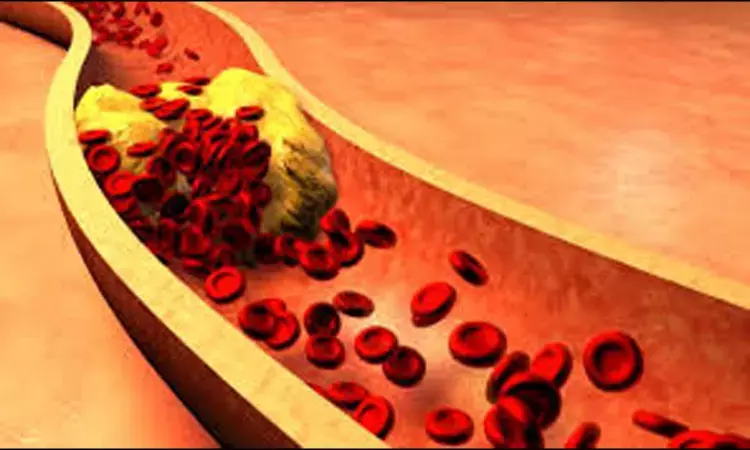- Home
- Medical news & Guidelines
- Anesthesiology
- Cardiology and CTVS
- Critical Care
- Dentistry
- Dermatology
- Diabetes and Endocrinology
- ENT
- Gastroenterology
- Medicine
- Nephrology
- Neurology
- Obstretics-Gynaecology
- Oncology
- Ophthalmology
- Orthopaedics
- Pediatrics-Neonatology
- Psychiatry
- Pulmonology
- Radiology
- Surgery
- Urology
- Laboratory Medicine
- Diet
- Nursing
- Paramedical
- Physiotherapy
- Health news
- Fact Check
- Bone Health Fact Check
- Brain Health Fact Check
- Cancer Related Fact Check
- Child Care Fact Check
- Dental and oral health fact check
- Diabetes and metabolic health fact check
- Diet and Nutrition Fact Check
- Eye and ENT Care Fact Check
- Fitness fact check
- Gut health fact check
- Heart health fact check
- Kidney health fact check
- Medical education fact check
- Men's health fact check
- Respiratory fact check
- Skin and hair care fact check
- Vaccine and Immunization fact check
- Women's health fact check
- AYUSH
- State News
- Andaman and Nicobar Islands
- Andhra Pradesh
- Arunachal Pradesh
- Assam
- Bihar
- Chandigarh
- Chattisgarh
- Dadra and Nagar Haveli
- Daman and Diu
- Delhi
- Goa
- Gujarat
- Haryana
- Himachal Pradesh
- Jammu & Kashmir
- Jharkhand
- Karnataka
- Kerala
- Ladakh
- Lakshadweep
- Madhya Pradesh
- Maharashtra
- Manipur
- Meghalaya
- Mizoram
- Nagaland
- Odisha
- Puducherry
- Punjab
- Rajasthan
- Sikkim
- Tamil Nadu
- Telangana
- Tripura
- Uttar Pradesh
- Uttrakhand
- West Bengal
- Medical Education
- Industry
TyG Index independent marker for detecting Subclinical CAD: Study

Atherosclerotic cardiovascular (CV) events commonly occur in individuals with a low CV risk burden. The researchers evaluated the ability of the triglyceride glucose (TyG) index to predict subclinical coronary artery disease (CAD) in asymptomatic subjects without traditional CV risk factors (CVRFs).
They found that triglyceride glucose index (TyG) was an independent marker for predicting subclinical coronary artery disease (CAD) in individuals with no traditional cardiovascular risk factors (CVRFs) The study has been published in Lipids in Health and Disease.
In this retrospective, cross-sectional, observational study, researchers selected asymptomatic patients with no traditional CVRFs who had undergone self-referred coronary computed tomography angiography. They evaluated the association of TyG index with CAD in 1250 (52.8 ± 6.5 years, 46.9% male) asymptomatic individuals without traditional CVRFs (defined as systolic/diastolic blood pressure ≥ 140/90 mmHg; fasting glucose ≥126 mg/dL; total cholesterol ≥240 mg/dL; low-density lipoprotein cholesterol ≥160 mg/dL; high-density lipoprotein cholesterol < 40 mg/dL; body mass index ≥25.0 kg/m2; current smoking; and previous medical history of hypertension, diabetes, or dyslipidemia). Patients were divided into 3 groups based on TyG index tertiles: group I (mean TyG index, 7.84±0.19), group II (mean TyG index, 8.27±0.11), and group III (mean TyG index, 8.83±0.30). CAD was defined as the presence of any coronary plaque identified on CCTA.
The researchers found that the prevalence of CAD increased with elevating TyG index tertiles The TyG index was found to have an incremental impact on CAD (OR, 1.473; 95% CI, 1.026-2.166; P =.036) in a multivariate regression analysis. A receiver operating characteristic curve analysis indicated that the optimal TyG index cut-off for predicting subclinical CAD (as determined using the Youden index) was 8.44 (sensitivity, 47.9%; specificity, 68.5%; area under the curve,0.6; 95% CI, 0.561-0.640; P <.001).
Study limitations include possible selection bias, problems with generalizability, and the use of CCTA imaging in asymptomatic individuals.
The researchers concluded that TyG index is an independent marker for predicting subclinical CAD in individuals conventionally considered healthy.
"The present study identified the optimal cut-off of TyG index for predicting CAD in asymptomatic CVRF-free individuals," concluded the researchers. "Although the predictive value improved after considering non-modifiable clinical factors, including old age and male sex, it remained only moderately powerful. Further large-scale prospective studies might be necessary to confirm the significance of TyG index in primary prevention of CAD in individuals who have conventionally been considered healthy."
For further reference log on to :
Park GM, Cho YR, Won KB, et al. Triglyceride glucose index is a useful marker for predicting subclinical coronary artery disease in the absence of traditional risk factors [published online January 14, 2020]. Lipids Health Dis. doi: 10.1186/s12944-020-1187-0
Dr Kamal Kant Kohli-MBBS, DTCD- a chest specialist with more than 30 years of practice and a flair for writing clinical articles, Dr Kamal Kant Kohli joined Medical Dialogues as a Chief Editor of Medical News. Besides writing articles, as an editor, he proofreads and verifies all the medical content published on Medical Dialogues including those coming from journals, studies,medical conferences,guidelines etc. Email: drkohli@medicaldialogues.in. Contact no. 011-43720751


